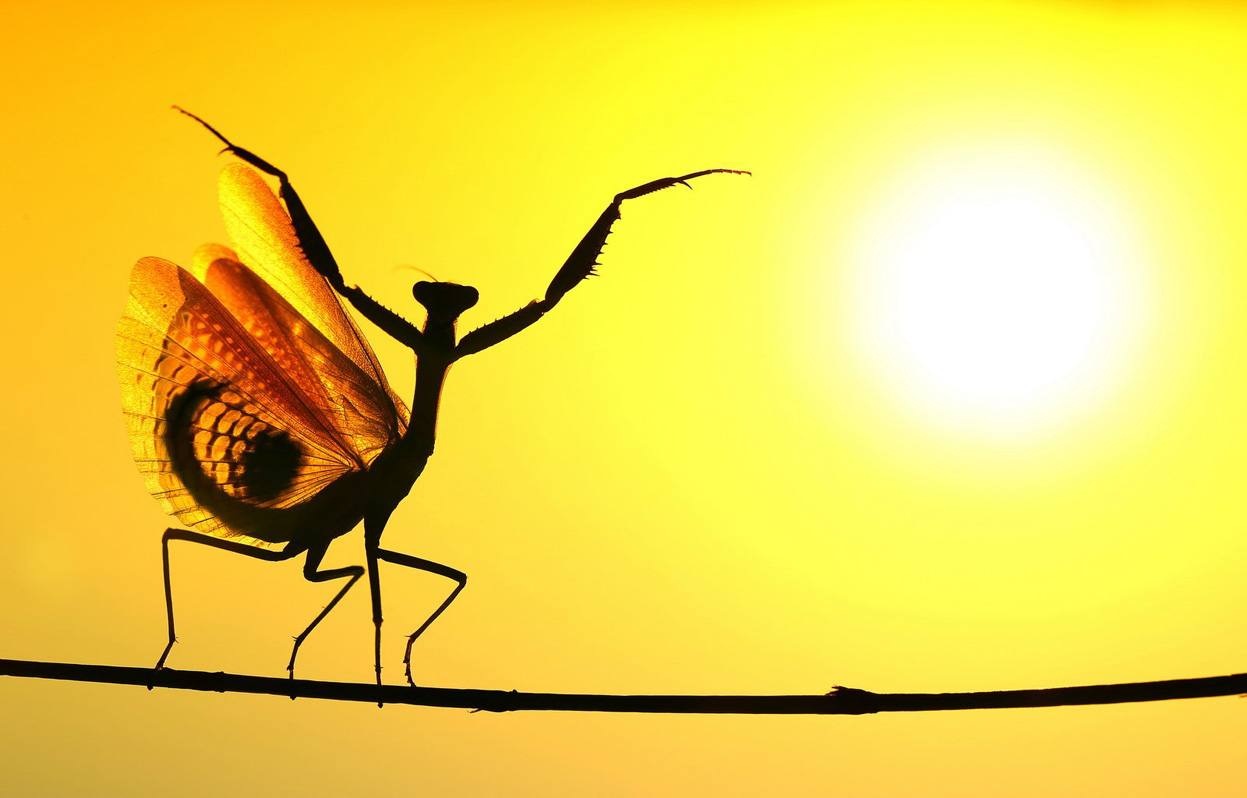Sooner or later, the great men turn out to be all alike. They never stop working. They never lose a minute. It is very depressing.
V.S. Pritchett, “Gibbon and the Home Guard” (via)
Official website of the author
Sooner or later, the great men turn out to be all alike. They never stop working. They never lose a minute. It is very depressing.
V.S. Pritchett, “Gibbon and the Home Guard” (via)

A Mediterranean mantis. This photo is among the early entries in the 2014 National Geographic Photo Contest.
To judge by the clock, the present moment is nothing but a hairline which, ideally, should have no width at all — except that it would then be invisible. If you are bewitched by the clock you will therefore have no present. “Now” will be no more than the geometrical point at which the future becomes the past. But if you sense and feel the world materially, you will discover that there never is, or was, or will be anything except the present….
For the perfect accomplishment of any art, you must get this feeling of the eternal present into your bones — for it is the secret of proper timing. No rush. No dawdle. Just the sense of flowing with the course of events in the same way that you dance to music, neither trying to outpace it nor lagging behind. Hurrying and delaying are alike ways of trying to resist the present.
The Van Gogh Museum in Amsterdam has a beautifully designed web site with, apparently, the entire collection available in eye-popping high resolution. It is amazing what detail you can see in these high-res images, right down to the brush strokes and globs of paint. It is as if the museum guards all turned their backs and allowed you to press your nose right up to the canvas. Above is a detail from “Wheatfield With Crows” (1890), one of the last pictures Van Gogh painted before his suicide. The complete picture is below, and you can click the image to see it a little larger. But to get the full effect, go download the insanely huge image at the museum’s web site.
In May, the Met in New York posted 400,000 high-res images from its collection, so this seems to be a trend.
Don’t say the old lady screamed. Bring her on and let her scream.
Mark Twain
Mario Puzo thought he was slumming when he wrote The Godfather. He was broke, an aspiring literary novelist with some respectful reviews but not many sales, and he hoped that a thriller about the mob might make a quick buck. … In fact, the writing of The Godfather released something fresh in Puzo’s imagination—a streak that was both potboilerish and also a little baroque—and if the result wasn’t “literary,” exactly, it was great pop fiction. … The director of those movies, Francis Ford Coppola, originally felt about them the way Puzo felt about his book; he considered them commercial hackwork compared with his more “artistic” films like “Rumble Fish” and “One From the Heart.” And as in Puzo’s case, that attitude actually proved liberating, enabling Mr. Coppola to adopt a style that was grander and more operatic—more “epic,” to use the Hollywood term—but also less arty and self-conscious than the one he used for his more personal projects. Mr. Coppola’s “Godfather” enterprise went off the rails in “Part III,” which came out in 1990, when self-importance again seemed to overtake him (along with his star, Al Pacino) and he was no longer in touch with the story’s roots in pop culture and gangster-movie mythology.
I suppose there is a more compelling case to be made for artistic ambition, but it is worth remembering that great, lasting work often comes when artists aim low.
The Atlantic has posted a series of remarkable photos of the Wright brothers’ early experiments in flight. Above:
First flight: 120 feet in 12 seconds, on December 17, 1903. This photograph shows man’s first powered, controlled, sustained flight. Orville Wright at the controls of the machine, lying prone on the lower wing with hips in the cradle which operated the wing-warping mechanism. Wilbur Wright running alongside to balance the machine, has just released his hold on the forward upright of the right wing. The starting rail, the wing-rest, a coil box, and other items needed for flight preparation are visible behind the machine. Orville Wright preset the camera and had John T. Daniels squeeze the rubber bulb, tripping the shutter.
Beginners sometimes ask me how a novel is written, the answer to which is: Any way at all. One knows only when it is finished, and then if one is at all serious, he will never do it the same way again.
Thomas Berger, author of Little Big Man